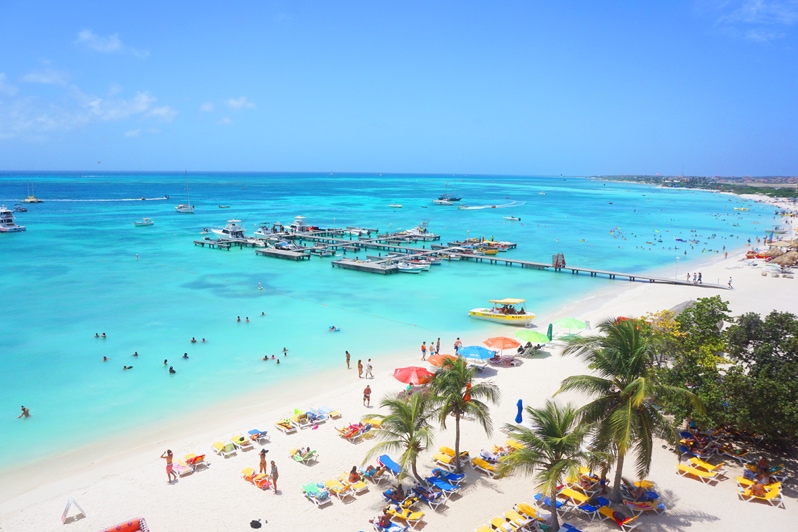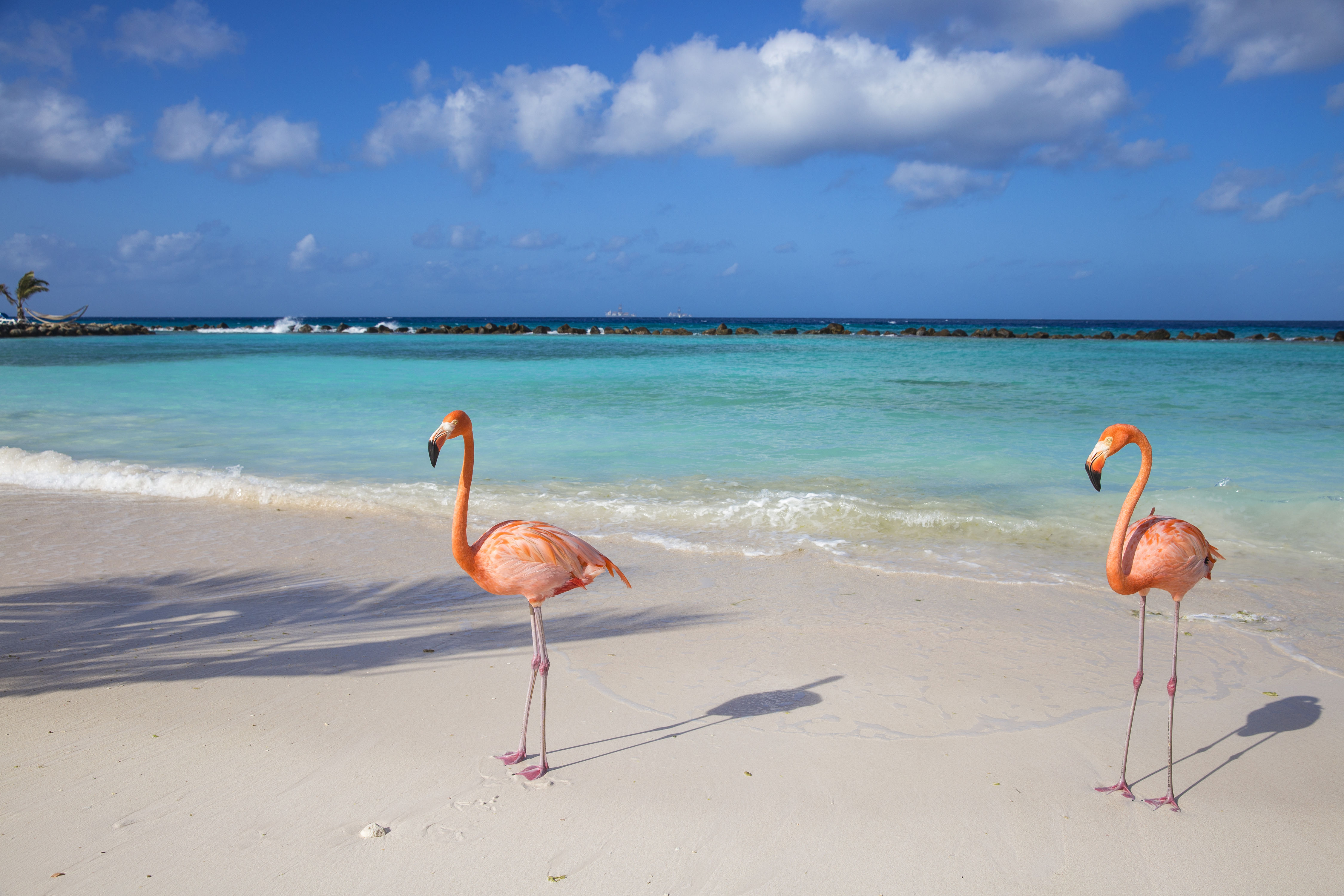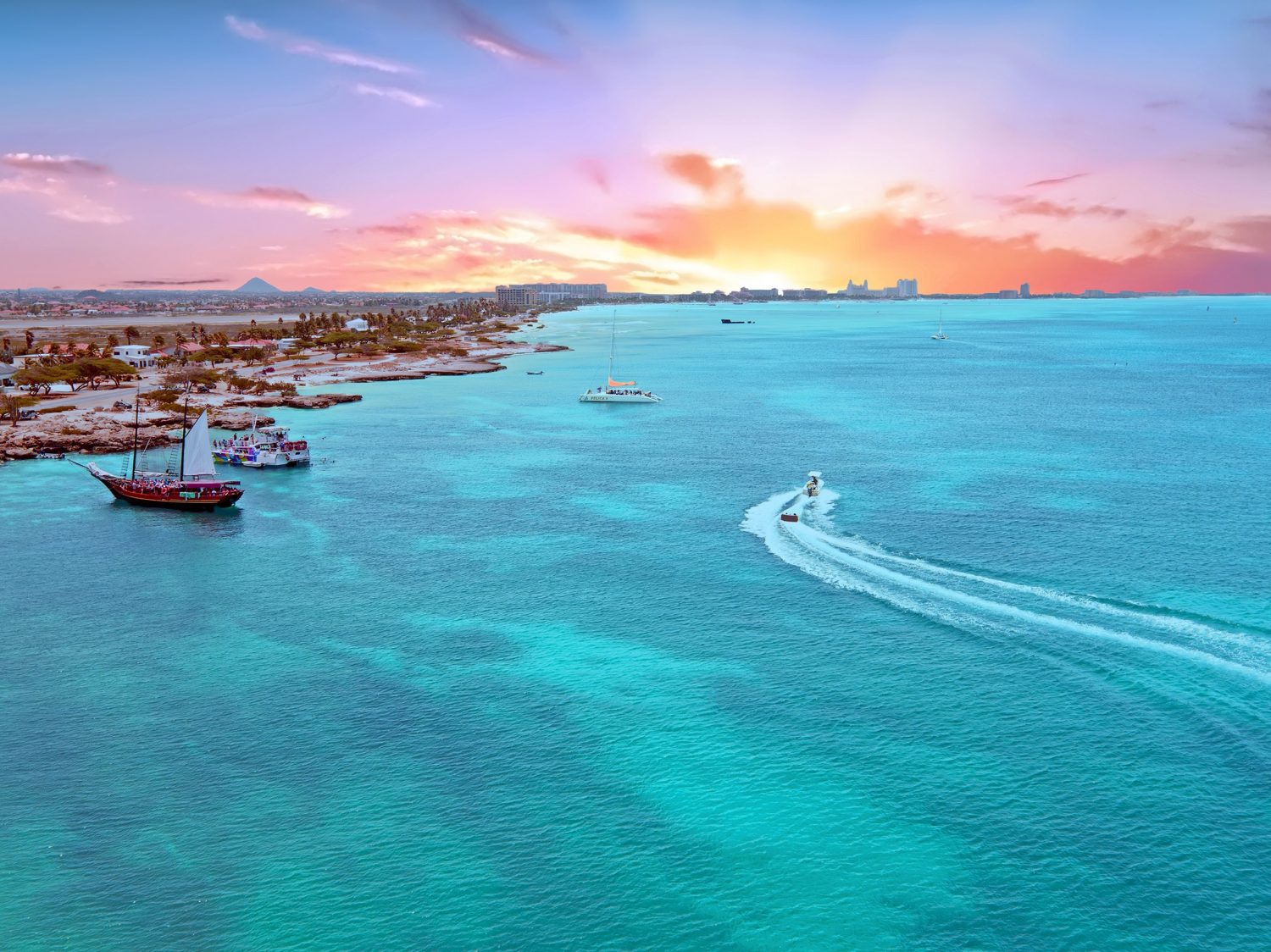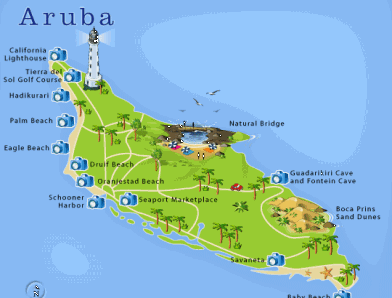







General Information
Aruba is a 19 miles (30 km)- long island of the Lesser Antilles in the southern Caribbean Sea. It's a mere 15 miles (24 km)
from the coast of Venezuela. On a clear day the Venezuelan mainland is visible from the south-eastern coast.
Together with Bonaire and Curaçao, it forms a group referred to as the ABC islands of the Leeward Antilles,
the southern island chain of the Lesser Antilles.
Aruba, which has no administrative subdivisions, is one of the four constituent
countries that form the Kingdom of the Netherlands, together with The Netherlands, Curaçao, and Sint Maarten.
Aruban citizens hold Dutch passports.
The oblong island is fronted by heavy surf and a jagged coast on our northern,
windward side and by seven miles (11 km) of honey-colored sand beaches on the southern leeward coast.
It's some 75 square miles (193 km2) in area and measures about five miles (8 km) at it widest point and 19 miles
(30 km) in length. Aruba is an easy island to get around, the road systems are in good shape, well-marked,and, let's face it,
it's hard to get lost for too long on an island where the coast is never more than 3 miles away.
Culture/History
Aruba’s long stretches of white sand and clear waters attract numerous tourists. The Cultural Center in Oranjestad offers concerts,
ballet, folkloric presentations, and art exhibits throughout the year. The city also includes historical, archaeological, and numismatic
museums. The New Year’s Day festivities and pre-Lenten Carnival in February are especially colourful and popular celebrations.
The island’s earliest inhabitants were Arawak Indians, who left behind red cave drawings and clay pottery and stone tools. After Aruba
was claimed by Spain in 1499, it became a centre of piracy and smuggling. In 1636 it was taken by the Dutch and occupied by the Dutch
West India Company. As part of the Netherlands Antilles, Aruba came briefly under British rule during the Napoleonic Wars but was returned
to the Netherlands in 1816. The economy remained weak until an oil refinery was constructed at San Nicolas (Sint Nicolaas) in the 1920s, which
raised the standard of living dramatically. Immigration from the rest of the Caribbean, the United States, Venezuela, and Europe contributed to
a substantial increase in population. Despite its new economic strength, Aruba remained politically subordinated to the Antilles’ main island of Curaçao.
In 1986 Aruba obtained autonomous status, the result of a popular movement led by the People’s Electoral Movement (Movimento Electoral di Pueblo) to break
away from Curaçaoan—rather than from Dutch—domination. In 1994 the Aruban government, in conjunction with the governments of the Netherlands and the Netherlands Antilles,
decided to postpone indefinitely the transition to full independence.
Food
Aruban cuisine draws from the delicacies of countries around the world, including the Netherlands, South America, Europe, the Caribbean,
and even from the native people of their own island. Combined, these flavors make Aruba's culinary offerings something that every visitor
can enjoy. Furthermore, Arubans prefer to serve dishes that are simple, yet filling, spiced to enhance the dish, not to shock. This means
that people who do not enjoy the spicy offerings typically associated with the Caribbean will not have to pass on sampling local cuisine.
The most popularly eaten meals in Aruba are chicken, rice, beef, and fish based. Top seafood choices in Aruba include red snapper, mahi mahi,
and grouper, which are caught fresh on a daily basis. For the sweet tooth in your traveling-party, Aruba is known to showcase numerous delectable
desserts. Many desserts feature locally harvested ingredients such as coconut (cocada, and pudin di coco), banana (banana bread and banana na binja),
and even rum (bolo borracho and various cakes soaked in rum). At every meal you'll need something to wash your food down with. Fresh juices offer a
great opportunity to taste the island's sweet tropical fruits, but bottled water is also highly recommended, due to the refining process utilized on
the island that gives it a crisp, clean taste. Sodas, both Caribbean and American are also widely available. When juices just aren't cutting it, turn
to something stronger. Coecoei is a local liquor that dates back hundreds of years. Bottled now by Playa Liquor and Bottling Company, coecoei is red
in color because its main ingredient is the sap of the agave plant. Coecoei is a staple in Aruban mixed drinks, showing up in such show-stoppers as
the Aruba Sunset. Regardless of whether vacationers are searching for a quiet, romantic dinner for two or an accommodating meal for the whole family,
there are countless ways enjoy dining in Aruba.